Hi Team
I have been experimenting with a simplified design using the coils to switch the BJT and combined this with POC coils.
My idea was to have a "semi" self tuning pulse similar to Jagau's SRO and a very basic implementation of Melnichenko circuit above.
Here is what I have started with, very simple, but some very interesting results. Will run on as little as 0.5volts while still lighting 18 LEDs.

In the picture below the Blue trace is accross the BJT and the Yellow the current through a 1ohm resistor on the CCW coil. Nice sawtooth wave.
As you can see I am using 1Volt supply which is drawing 70mA and lighting brightly 18 LEDs. Surprisingly the circuit draw with only 2 LEDs is still about the same. 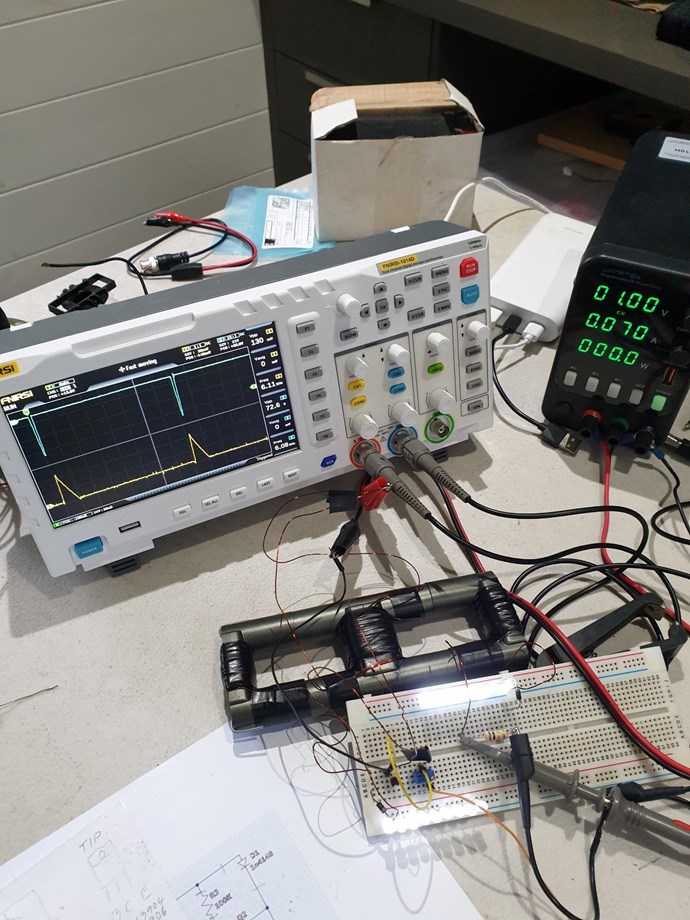
The variable resistor is a 10 turn to allow for fine tuning. Surprisingly it adjusts for a very wide frequency and influences voltage peak and current draw as you would expect.
I have much to explore yet as I have burnt out several BJTs, VRs and over 20 LEDs as I tune to a frequency slightly below where I am at here. As I approach this point the cores vibrate loudly and there is ringing pattern across the BJT then puff. I solved this by limiting the supply current, but have some investigating to do here.
Raising the supply voltage increases the frequency and the current in the system. Which extends the sawtooth wave approaching more the ideal.
There are many areas to explore here.
I encourage others to give this very simple build a go.
Kind Regards
Brian
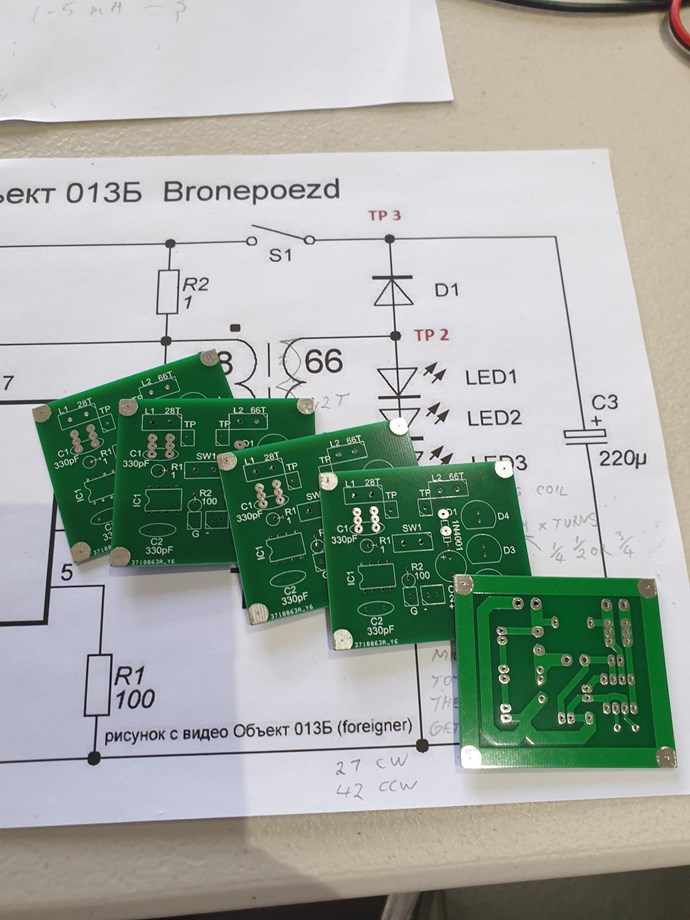









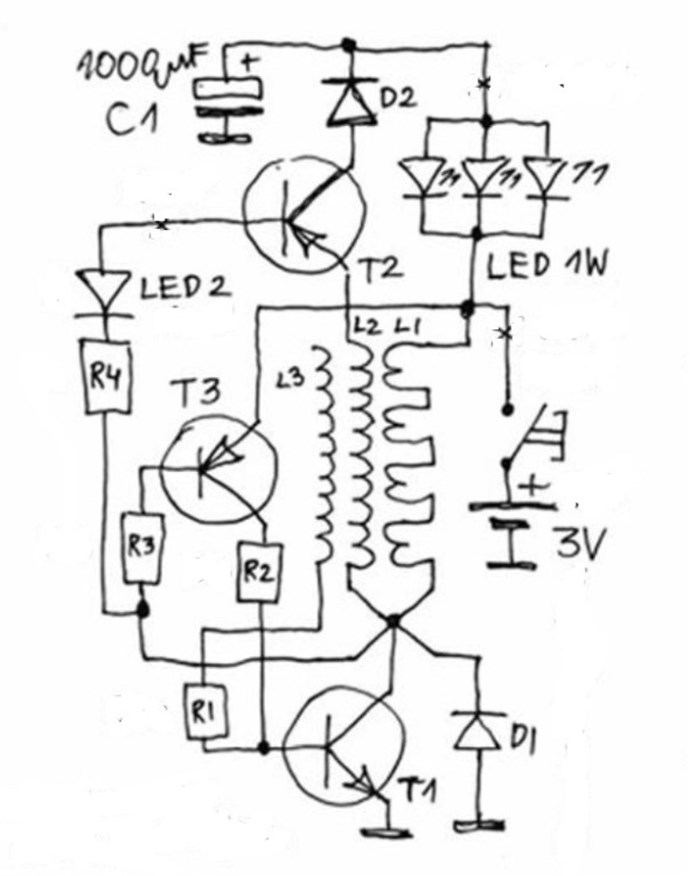
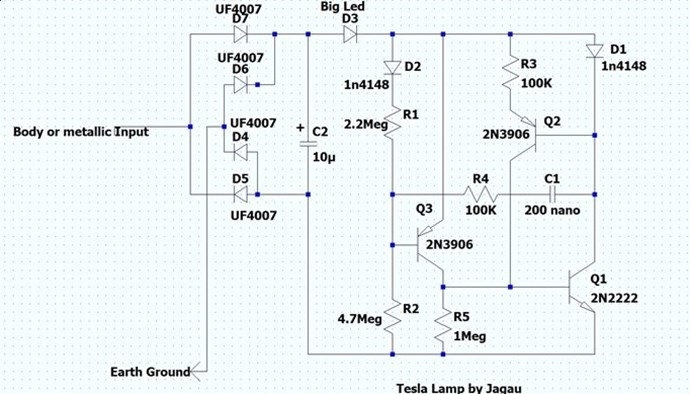
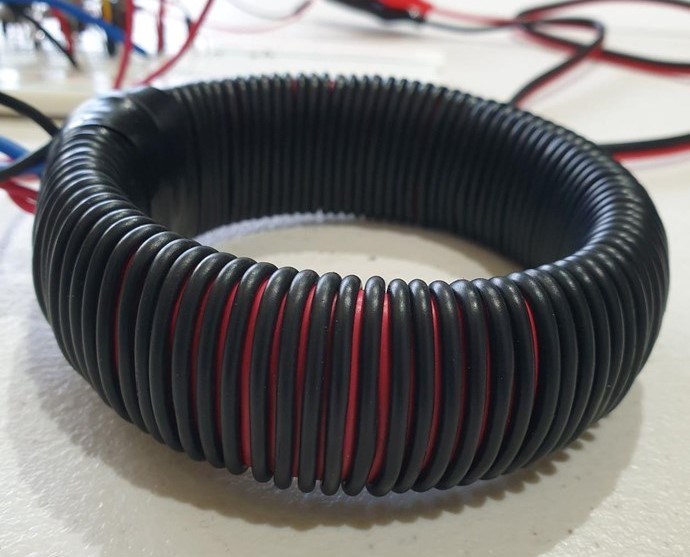
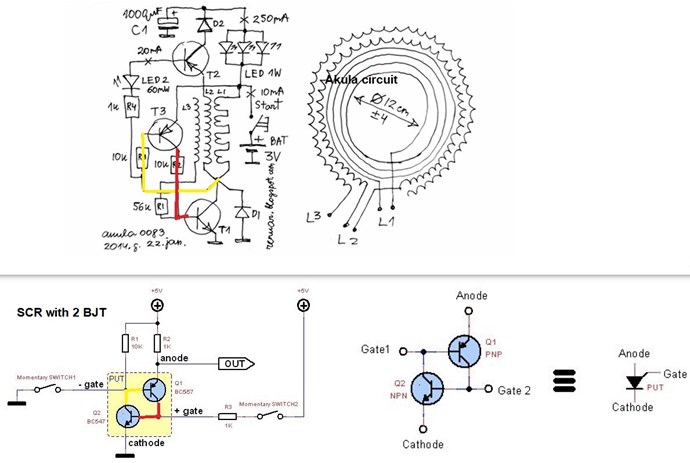



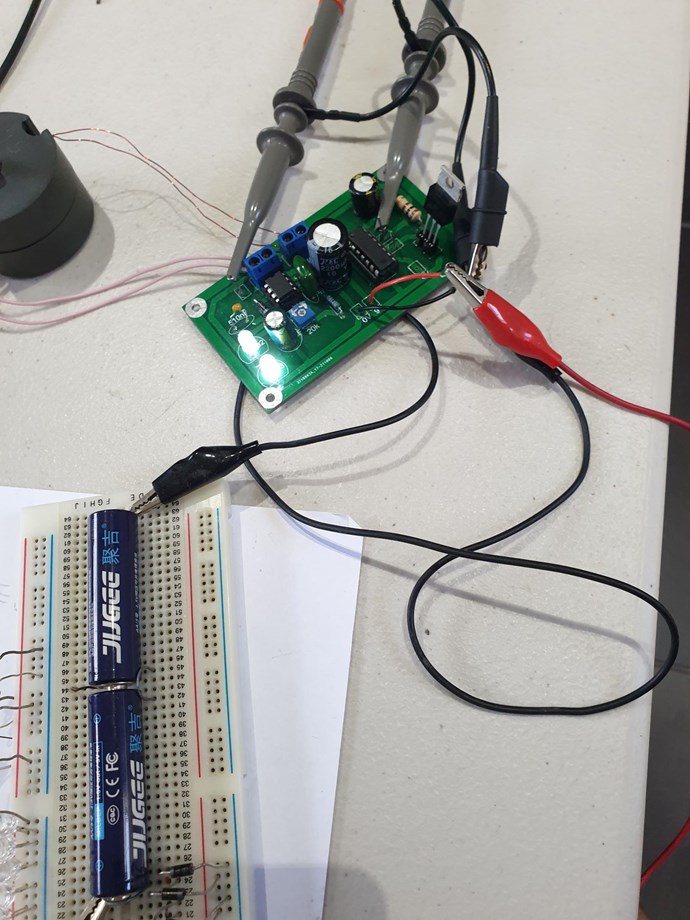
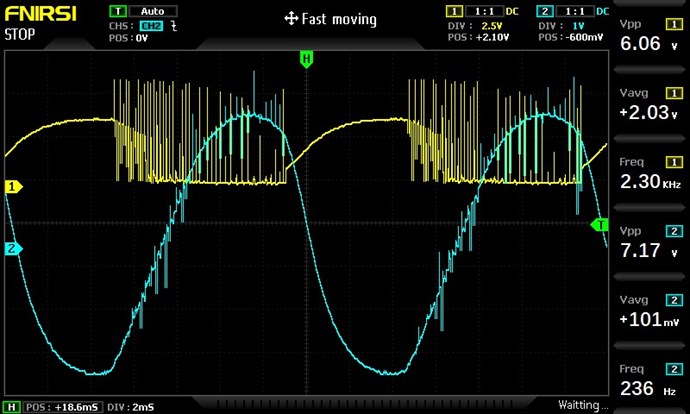
 I tried further tuning via the timing cap on pin3 of the MC34063, but the effects were minimal.
I tried further tuning via the timing cap on pin3 of the MC34063, but the effects were minimal.






